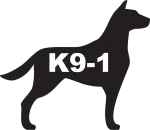Dog Training World › Forums › General Dog Training Discussion › Learning Theory › The positive ONLY cult › Reply To: The positive ONLY cult
-
Great article Lisa,
I can feel your frustration that many trainers have experienced through your words.
What I have found with the word “punishment” is that too often the PO community is exploiting the word to assume the definition of common language which gives visions of harsh retribution for actions.
I always stick to my guns and teach the word “punishment” in class by using the term as it relates to operant condition, which basically means to “discourage a behavior” and not by definition to be harsh to an “animal”. It is about the behavior, and this can be anything that works, so it is up to the skill of the trainer and the respect they have for the animal to do this is the least invasive way as possible that gets results and doesn’t harm the relationship with the dog or otherwise cause side effects.
I really like what you write here:
Children play a game called “Hot and Cold”. The person who is “It” has to find a particular object. If the child steps closer to the object, the crowd yells, “Hot!” If the child steps away from the object the crowd yells, “Cold!” The difference between this game and the PO method is that the PO operator doesn’t yell “Cold” that’s a negative marker. That’s punishment. So the dog wanders around the room only being told “Hot” for every behavior, every command he’s taught.
And that is ultimately what the problem is with PO training. It is unnecessarily making it more difficult for a dog to learn and the handler to teach. This will give lesser results.
When and how to give punishment is something that CAN be abused (done in access or incorrectly or at wrong time). This CAN cause side effects, but it is also why there should be professionals and even experienced pet owners that can educate about this based on their own experience.
I personally do not use my hands on the dog for any form of punishment because of my own experiences where it can cause side effects about the intentions of hands, especially by unfamiliar people. But, I also use tools like ecollars that have the potential for even worse side effects. This is something that as a group I’m hoping to evolve in this section here: attitude
It is to make us think as when is it appropriate to correct the dog, and when is it OK to even let it slide? For instance if a dog really is scared we are going to take away their food or bone when we want them to have it in the first place should we “correct” for growling or no? If we ask a dog to “sit” and he disobeys because his testicles are going to hit hot pavement (and he knows it) should we still correct the dog? What is the best way to have an obedient dog that trusts us and mostly listens because they want to please us and also has a sense of duty. It is the balance that we strive to achieve and obviously as your post well points out.. it is not possible at all with positive only training.

